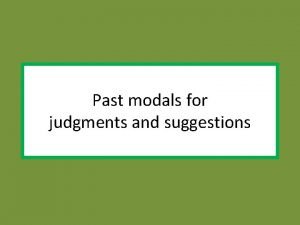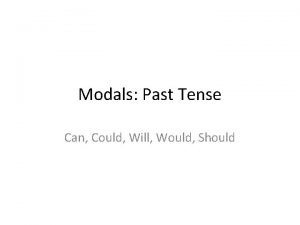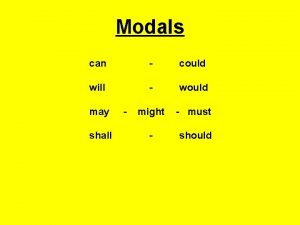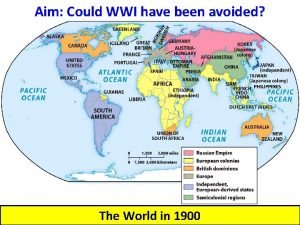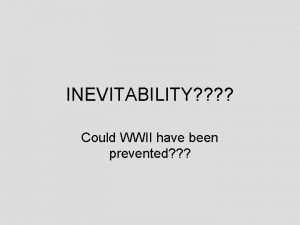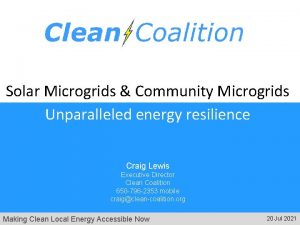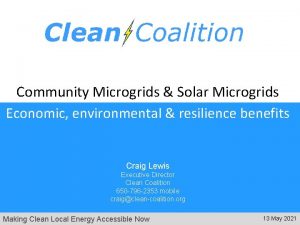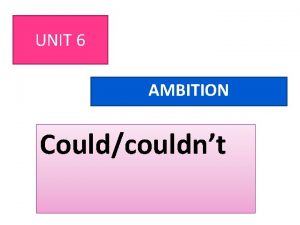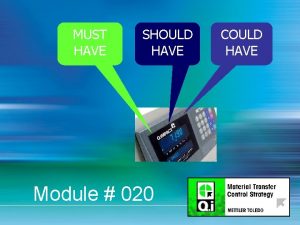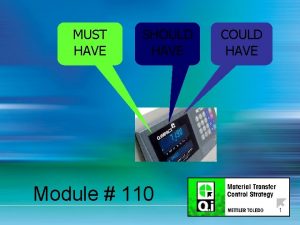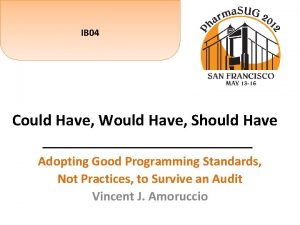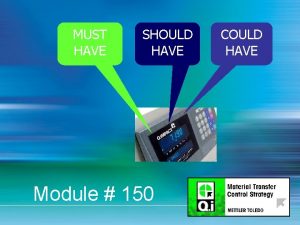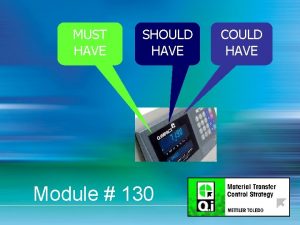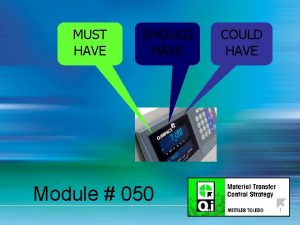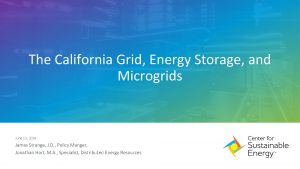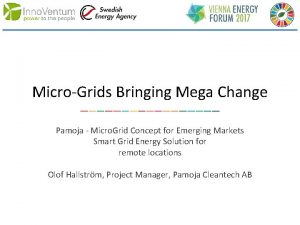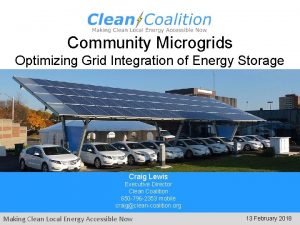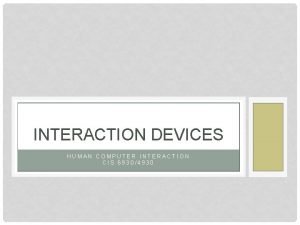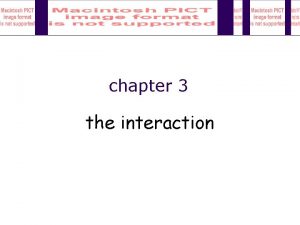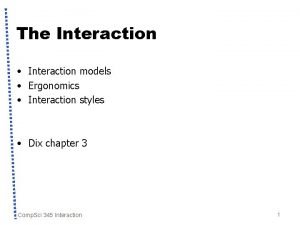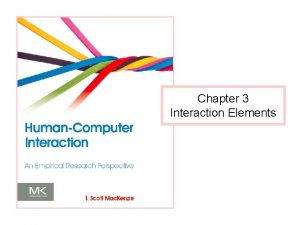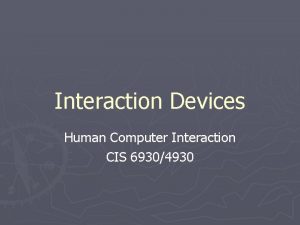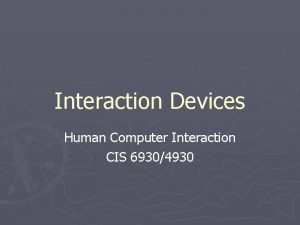Microgrids and the grid interaction Microgrids could have































- Slides: 31

Microgrids and the grid interaction • Microgrids could have a grid interconnection to • Improve system economics • Improve operation • Improve availability • With a suitable planning, grid planning can benefit from having microgrids by • Reducing conductor’s size • Improving availability • Improving stability • Tools, strategies and techniques for an effective integration of a microgrid into the main grid: • Net metering – bi-directional power flow. • Peak shaving • Advanced communications and controls • Demand response (? ) 1 © Alexis Kwasinski, 2010

Microgrids and the grid interaction • Interconnection practice / recommendation: IEEE standard 1547 • Potential issues with microgrids integration into the main grid: • Infrastructure long term planning / economics: • There is no coordination in planning the grid and microgrids. • The grid is planned on a long term basis considering traditional loads. • Microgrids may “pop-up” afterwards “without notice. ” • Grid’s planning links economic (cost of grid’s electricity, future demand…. . ) and technical aspects (line congestion…. ) • Stability: microgrids are variable loads with positive and negative impedance (they can act to the grid as generators) 2 © Alexis Kwasinski, 2010

Microgrids and the grid interaction • More potential issues with microgrids integration into the main grid: • Safety: When there is a fault in the grid, power from the microgrid into the grid should be interrupted (islanding) • Availability: Microgrids can trigger protections (directional relays) upstream in the grid and interrupt service to other loads • Key issue: microgrids are supposed to be independently controlled cells within the main grid. • How much independence microgrids should have? • Does independence apply also to planning? • How much interaction / communications should be between the grid and the microgrid? 3 © Alexis Kwasinski, 2010

Microgrids and the grid interaction • Example of microgrid development. Initial condition. • Equipment and financial planning is done with all the load in the figure in mind. 4 © Alexis Kwasinski, 2010

Microgrids and the grid interaction • Example of microgrid development. Planning issues. A microgrid is installed few years later. Transformers and conductors can now be oversized (remember this aspect for PEV and PHEV integration) Microgrid’s area 5 © Alexis Kwasinski, 2010

Microgrids and the grid interaction • Example of microgrid development. Initial normal power flow direction Directional Relay 6 © Alexis Kwasinski, 2010

Microgrids and the grid interaction • Example of microgrid operational issues. New power flow with a microgrid. • The microgrid’s power trips open the directional relay • Is it possible to change the grid’s state fast enough to prevent voltage collapse due to loss of stability caused by the sudden load changes introduced by the microgrid? Directional Relay • What microgrid’s control action follows? • Can the microgrid stop injecting power back into the grid (i. e prevents islanding)? Microgrid’s area 7 © Alexis Kwasinski, 2010

Microgrids and the grid interaction • Example of microgrid operation. Islanding. • If islanding occurs the microgrid will continue to provide power to a portion of the grid even though the grid connection upstream has been interrupted. • Potential issues: • Utility crews safety. • Power quality at the energized portion could be poor. Loads could be damaged. “Island” Microgrid’s area 8 © Alexis Kwasinski, 2010

Microgrids and the grid interaction • Grid interconnection might be different for dc or ac microgrids • For ac microgrids, grid interconnection can be done directly, with a disconnect switch, and a transformer only. • For dc microgrids an inverter is necessary • Examples: CERTS microgrid (ac) 9 NTT Facilities Sendai project (ac and dc) © Alexis Kwasinski, 2010

Microgrids and the grid interaction • dc microgrids integration with the grid • The interface may or may not allow for bidirectional power flow. Bidirectional power flow can be needed for: • `Energy storage • dc loads 10 © Alexis Kwasinski, 2010

Smart grids • There are two similar but not equal approaches to the smart grid concept. • EU-led vision (customer and environmentally driven): • Europe’s electricity networks in 2020 and beyond will be: • Flexible: Fulfilling customers’ needs whilst responding to the changes and challenges ahead; • Accessible: Granting connection access to all network users, particularly for renewable energy sources and high efficiency local generation with zero or low carbon emissions; • Reliable: Assuring and improving security and quality of supply, consistent with the demands of the digital age; • Economic: Providing best value through innovation, efficient energy management and ‘level playing field’ competition and regulation. “European Technology Platform Smart. Grids. Vision and Strategy for Europe’s Electricity Networks of the Future” European Commission KI-NA-22040 -EN-C EUR 22040 11 © Alexis Kwasinski, 2010

Smart grids • US led vision (security and consumer driven) - Motivated by needs in availability improvements “The NETL Modern Grid Initiative A VISION FOR THE MODERN GRID”, US DOE 12 © Alexis Kwasinski, 2010

The smart grid concept • There are many views of what is In reality, a smart grid is not a single concept but rather a combination of technologies and methods intended to modernize the existing grid in order to improve flexibility, availability, energy efficiency, and costs. • Smart Grid 1. 0: • Intelligent meters • Smart Grid 2. 0 (“Energy Internet” enabler): • advanced autonomous controls, • distributed energy storage, • distributed generation, and • flexible power architectures. • Distributed generation (DG), flexible power architectures, autonomous controls and loads constitute local low-power grids (micro-grids). 13 © Alexis Kwasinski, 2010

Smart grid evolution: dull past/present • Centralized operation and control • Passive transmission and distribution. • Lack of flexibility • Vulnerable 14 © Alexis Kwasinski, 2010

Smart grid evolution: present/immediate • Still primarily centralized future control. • Limited active distribution network (distributed local generation and storage). Use of virtual storage (demandresponse) • Addition of communication systems • More efficient loads • Flexibility issues • Somewhat more robust 15 © Alexis Kwasinski, 2010

Smart grid evolution: Future • Distributed operation and control • Active distribution network (distributed local generation and storage). • Integrated communications • Advanced more efficient loads • Flexible • More robust 16 © Alexis Kwasinski, 2010

Smart grids • Technologies and concepts: • Distributed energy resources (generation and storage) are fundamental parts. They provide the necessary active characteristics to an otherwise passive grid. • Advanced and distributed communications. All the grid components are able to communicate. The grid operates like a power-Internet (distributed, multiple-redundant, interactive and autonomous). I. e. a Power-Net. • Intelligent metering. • Policies and regulatory actions. Necessary to achieve integration of all the parts. Inadequate pricing models is a significant barrier to introduce service-based business models (vs. energy-based). • Grid modernization. 17 © Alexis Kwasinski, 2010

The Power-Net • DOE view for a smart grid: - “An electrical grid is a network of technologies that delivers electricity from power plants to consumers in their homes and offices. ” • A Power-Net expands this view based on paradigms from the Internet. • Some features compared with conventional power grids: more reliable, efficient, and flexible. 18 © Alexis Kwasinski, 2010

The Power-Net • Like the Internet, the Power-Net involves diverse and redundant path for the power to flow from distributed generators to users. Its control resides in autonomous distributed agents. • Power is generated in distributed generators, usually from alternative or renewable energy sources. Power buffers are included to match generators and loads dynamics. Energy buffers are added to make variable sources dispatchable. • Contrary to the Internet, the Power-Net involves a local approach for power interactions. 19 © Alexis Kwasinski, 2010

The Internet • Desired Internet features: • distributed and autonomous control, • diverse information routing and redundant data or application storage, • performance degradation instead of full failure, • link transmission rate control through temporary data storage in buffers. Buffer size 20 Link bandwidth Maximum (delay) time © Alexis Kwasinski, 2010

Extending the Internet into Smart • Key aspect: add distributed generation (fuel cells, microturbines, PV grids modules, small wind, reciprocating engines) close to the load to make power grids distribution portion an active electric circuit. • Autonomous and distributed controls can be implemented with DG. • Power vs. Energy buffers: Predicted solar radiation Batteries on PV module (Energy buffer) Ultracapacitors or flywheels (power buffer) 21 © Alexis Kwasinski, 2010

Control and communication issues • Coordination is needed in order to integrate variable generation sources (such as PV modules) in the grid. • Centralized control requires significant communication resources (i. e. , large bandwidth spectrum allocation) which in general is not available. • The alternative is to provide all active nodes with an autonomous control that allows controlling power interactions with the grid without dedicated communication links. These more intelligent nodes become agents. VS. 22 © Alexis Kwasinski, 2010

Distributed generation • Smart grid planning (DG)for disaster resiliency must consider disaster impact on lifelines. During disasters special attention should be paid to dissimilar ways in which disasters affect different DG technologies. • Renewable sources do not have lifelines but they are not dispatchable, they are expensive, and they require large footprints. • Most DG technologies have availabilities lower than that of the grid. • DG needs diverse power supply in order to achieve high availabilities. • DG provides a technological solution to the vulnerable availability point existing in air conditioners power supply. • DG provides the active component to grid’s distribution portion, essential for advanced self-healing power architectures. 23 © Alexis Kwasinski, 2010

Grid’s behavior during » Power supply issues during disasters is disasters a grid’s problem transferred to the load. » Power grids are extremely fragile systems. 24 © Alexis Kwasinski, 2010

Grid’s behavior during » Common concept of damage to the electric grid during disasters: » Real sustained damage in more than 90 % of the area: 25 © Alexis Kwasinski, 2010

Conventional grid redundancy • Redundancy is not common in distribution and sub-transmission portions because redundancy may be very expensive. 26 © Alexis Kwasinski, 2010

Conventional grid diversity • Diversity implies more than one different components performing the same function. 27 © Alexis Kwasinski, 2010

Traditional Electricity Delivery Methods: Reliability • With disasters affecting large areas, grid interconnection and/or centralized control imply lack of diversity and a single point of failure. 28 © Alexis Kwasinski, 2010

Extending the Internet into Smart • Lifeline dependencies can be reduced by extended local energy grids storage. Lifeline’s effects on availability can be mitigated with diverse local power generation. • PVs and wind do not require lifelines but their variable profile leads to added DG or extensive local energy buffers. • Performance degradation: voltage regulation or selective load shedding. • Advanced (active) distribution through Power Routing Interfaces 29 © Alexis Kwasinski, 2010

Advanced Power Architectures Power routers Monitoring points • A hybrid ac (solid lines) and dc (doted lines) architecture with both centralized and distributed generation resources. 30 © Alexis Kwasinski, 2010

Smart grids: PHEV and PEV integration • Problem: Typical home peak power consumption is below 5 k. W. An electric vehicle may require 1 k. W to be charged in 8 hrs. or up to 8 k. W for shorter charging profiles. Also, PEV and PHEV penetration is not uniform (higher for neighborhoods with higher economical household income). Hence, grid’s distribution transformers can be easily overloaded PEV and PHEV even if charging is done during nighttime. • DG avoids overloading distribution transformers but economical issues still need to be addressed • Combination of DG and energy storage may be a suitable solution. 31 © Alexis Kwasinski, 2010
 Modals of deduction شرح
Modals of deduction شرح Past simple can't
Past simple can't Pin grid array and land grid array
Pin grid array and land grid array I have six faces and eight vertices
I have six faces and eight vertices Good morning ladies and gentleman
Good morning ladies and gentleman Square based pyramid symmetry
Square based pyramid symmetry Will would can could
Will would can could Economic causes of french revolution
Economic causes of french revolution If i could have 3 wishes
If i could have 3 wishes How could ww1 have been avoided
How could ww1 have been avoided You should hope the game is over soon
You should hope the game is over soon Ezekiel 14:23
Ezekiel 14:23 Must can should
Must can should Could wwii have been prevented
Could wwii have been prevented He could have called ten thousand angels verse
He could have called ten thousand angels verse Hình ảnh bộ gõ cơ thể búng tay
Hình ảnh bộ gõ cơ thể búng tay Bổ thể
Bổ thể Tỉ lệ cơ thể trẻ em
Tỉ lệ cơ thể trẻ em Chó sói
Chó sói Chụp phim tư thế worms-breton
Chụp phim tư thế worms-breton Alleluia hat len nguoi oi
Alleluia hat len nguoi oi Môn thể thao bắt đầu bằng chữ đua
Môn thể thao bắt đầu bằng chữ đua Thế nào là hệ số cao nhất
Thế nào là hệ số cao nhất Các châu lục và đại dương trên thế giới
Các châu lục và đại dương trên thế giới Công thức tiính động năng
Công thức tiính động năng Trời xanh đây là của chúng ta thể thơ
Trời xanh đây là của chúng ta thể thơ Mật thư anh em như thể tay chân
Mật thư anh em như thể tay chân Làm thế nào để 102-1=99
Làm thế nào để 102-1=99 độ dài liên kết
độ dài liên kết Các châu lục và đại dương trên thế giới
Các châu lục và đại dương trên thế giới Thể thơ truyền thống
Thể thơ truyền thống
